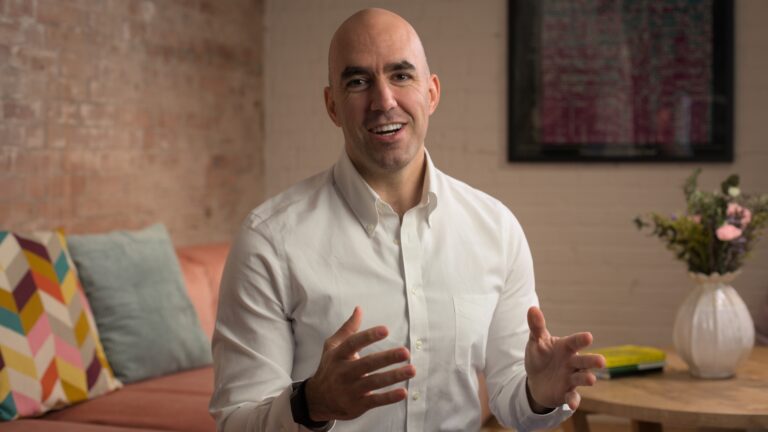Season 5: Innovating for impact
Unlocking customer insight: a practical approach

Putting people at the heart of innovation may sound like a straightforward concept, but in the world of business, it’s easier said than done. Even if you have a dedicated research department or a skilled researcher on your team, maintaining a consistent focus on the people you aim to serve throughout the process of developing new innovation, can be extremely challenging. Let’s delve into the most common traps that often impede this very noble mission of staying people-obsessed while innovating.
The 3 common obstacles to people-obsessed innovation:
- Unfettered creativity
The first trap is “unfettered creativity”. Picture this: you and some of your colleagues across various functions and disciplines have been brought together to brainstorm new solutions. The atmosphere is electric and the room is buzzing with ideas. There are Post-it notes of every colour littered on whiteboards which add to the halo of innovation. Creativity is flowing freely. It’s exhilarating. But in those moments, amidst all the excitement, the perspective of the people you’re ultimately trying to do good for, and whose needs you’re trying to meet, can sometimes take a backseat. It’s not that the team doesn’t care. Quite the contrary. In that moment, the unfettered creativity takes on a life of its own and casts a shadow of the human who should always remain at the centre of it all: your customer. - Speed to market
Next up, we have the “speed to market” trap. Imagine a scenario where an idea gains momentum within the team. Everyone’s eager to see it come to life, fuelling a rush to launch into the market. However, in the haste to make it happen, there’s often a critical step skipped: pausing to ensure that the idea genuinely resonates with real people.
This rush to market can lead to solutions that miss the mark in meeting your customers’ needs. And of course, don’t forget the opposite: “Slow to market” where companies spend so long developing a product or service without getting it into the hands of customers, by the time it launches it’s perhaps no longer useful or relevant. In short, you should aim to get input from your end user whenever possible and iterate to produce the best possible product or service. - Research maturity
Lastly, let’s talk about the “research maturity” trap, a topic close to my heart. Think about those people in your team or company who are closest to, and best understand, your target audience. They may already be armed with valuable customer insights, yet there’s a gap in effectively communicating these insights within the team or organisation. It’s not enough to have the right information; it’s equally crucial to convey it in a compelling manner that resonates and drives action.
So, how do we navigate these common traps?
First and foremost, it’s about fostering a culture of empathy and curiosity within your team. Encourage open dialogue and active listening to ensure that the voices and perspectives of your audience are always front and centre.
Secondly, embrace a mindset of iterative innovation. Instead of rushing to launch an idea, allow for iterative feedback loops that involve real people throughout the development process. This ensures that your solutions are continually refined to better meet the evolving needs of your audience.
Additionally, invest in building the communication skills of your sales, research or social media team – even if that’s you! – those people who have a direct line of contact with your audience, community or customers. Equip them with the tools and techniques to effectively convey their insights in ways that resonate with the rest of the organisation. Whether it’s through compelling storytelling or data visualization, the goal is to ensure that everyone is aligned around the needs of the people you serve.
TRY THIS:
Think about the latest product or service you brought to market. How many versions of this offering were there before you launched? How many rounds of feedback did you seek, and from whom? If your answer is “not many”, think about how you can invite more opinions next time.
In conclusion, putting people – your customers – in the centre of innovation is indeed a journey filled with challenges. However, by being mindful of the common traps and taking intentional tried and true steps to address them, you can pave the way for more meaningful and impactful solutions. Remember, it’s not just about the ideas; it’s about the people behind them. So, let’s stay vigilant, stay empathetic, and keep innovating with the people we serve at the forefront of our minds.


